How to create handmade watercolor paints from foraged pigments.
What is better; paints made from foraged natural pigments or mass-produced store-bought paints?
Everything is derived from nature; unfortunately, today we are living in a world that is driven by consumerism. Imagine walking through a forest or climbing a mountain, and foraging for pigments to make your own paints just like how it was done in the bygone era, instead of going to an art supply store and purchasing a mass-produced tube of paint. It is indeed very convenient getting paint supplies from an art store, but is it as salubrious as what nature has to offer us? The answer is simply no!
The labels on paint tubes never provide us with information about how something was made, the origin of raw materials, who produced it and under which conditions, what it contains, and what impact it had on our environment during the manufacturing process! Honestly speaking, no one even thinks about any of this because modern society today has become disconnected from nature!
After dabbling with store-bought colors for a little while, I came to a realization that art supplies are notorious for remaining tight-lipped about the content of their paints. You don’t know what chemicals are in your paint unless they carry extreme health risks warning on the label or if you are a nerdy scientist like me who will go down to the bottom of it! These kinds of warning labels indicate they are toxic to you and should, therefore, be handled with care. I am yet to come across a label that indicates the toxicity of the contents of a paint tube to our environment and other life forms. This means, in art studios all across the world, artists often have no inkling of what they are using to produce art or the impact of those materials on the environment. Hence, I embarked on a creative journey of making my own watercolor paints from foraged pigments and practicing sustainability in creating art as well!
“Connect with the earth”
Making a connection with pigments in their wild habitat!
Working with natural pigments is a transformative journey that fosters a harmonious bond between oneself and the Earth. Becoming acquainted with pigments within their natural settings and learning to ethically gather them possesses the power to significantly alter one’s artistic approach.
The splendor of nature sparks a rekindling of our inner essence. It prompts an awakening of the senses, enabling us to delve into the sanctity of all that exists within nature and to acknowledge our interconnectedness with everything we encounter.
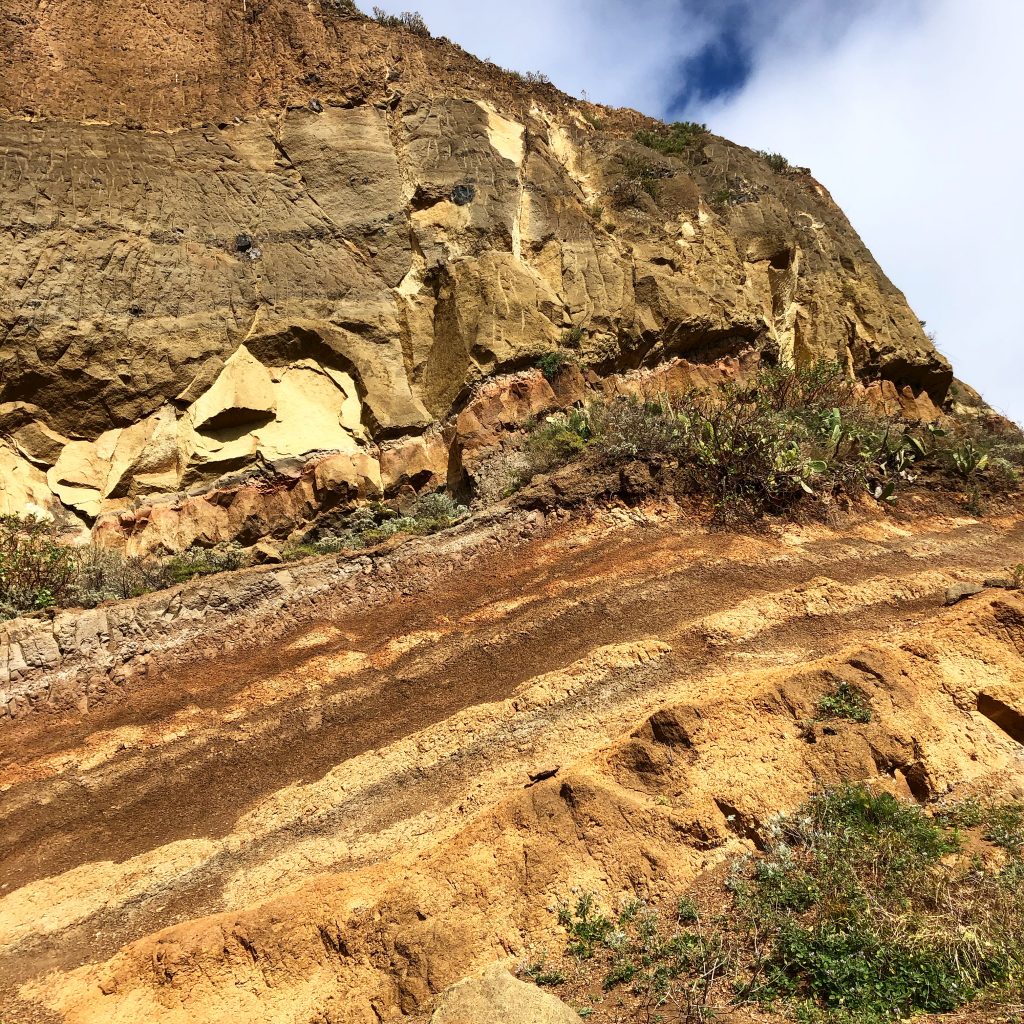
Beautiful cliffs of Anaga on Tenerife, Spain.
Given these realities, as a committed practitioner of sustainable art, I am on a journey to discover better ways to practice my craft – methods that do not involve consumption, pollution, or strain on our fragile ecosystems.
In this post, I will share with you my passion for making watercolor paints from foraged pigments. What is remarkable about this process is that each landscape is unique: your own land’s color palette will depend on its geological features.
As you forage for pigments and transform them into paints, you know exactly what goes into making a paint, where it came from, and lastly, they can all return back to the earth without having any destructive effect!
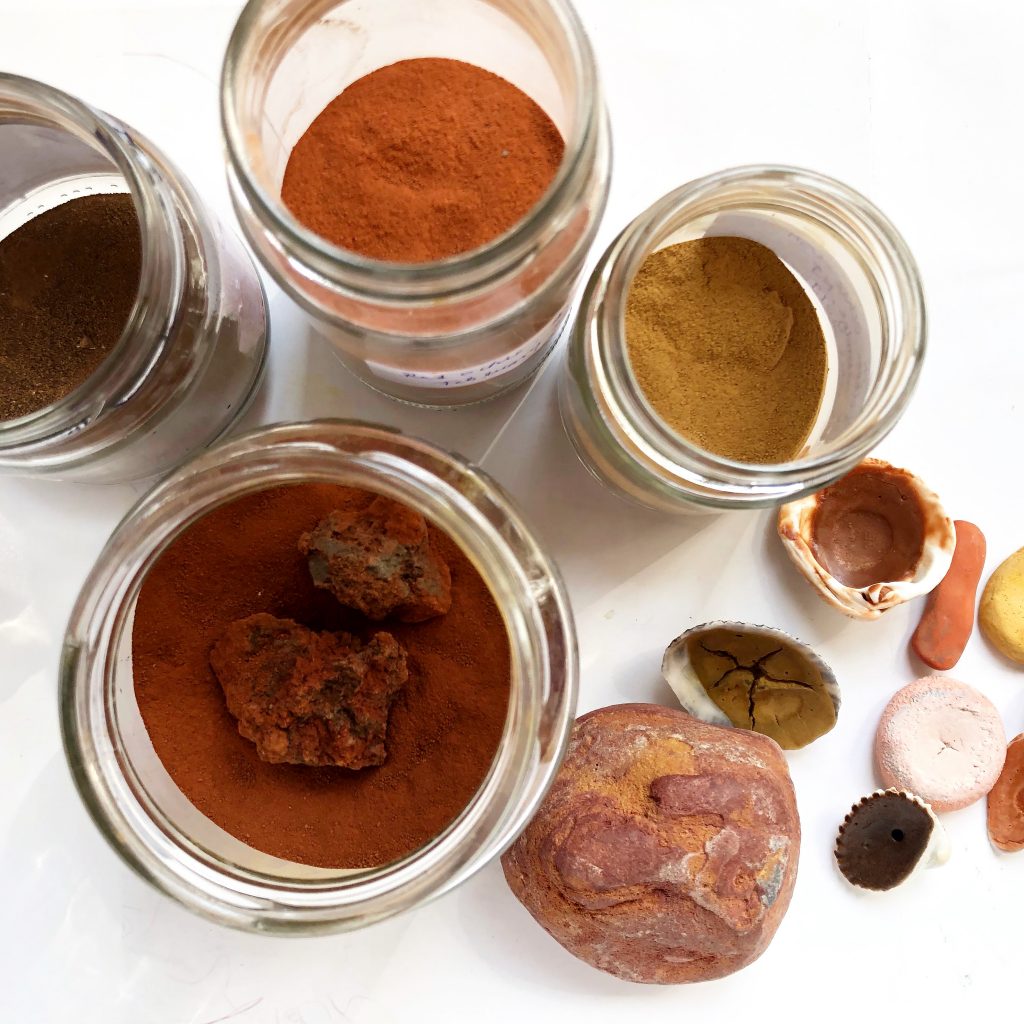
Foraged natural pigments and paints.
The ancient craft of Pigment Making
Natural pigments abound everywhere, and by immersing yourself in nature through travel and exploration, you can discover a diverse array of colors. Many of these hues originate from the earth itself: the rich tones of soil, clay, sand, or stone. Over the past couple of years, I’ve gathered a considerable collection of pigments from my travels. There’s a unique joy in crafting art using nothing but dust – art that fosters a deep connection with the materials themselves.
Foraging for natural pigments in the wild?
Any area with a significant amount of exposed rocks presents a potential opportunity to collect pigment stones. Since you’ll need pigments that are easy to process, especially when you’re just starting out, look for stones that are relatively soft. A simple test involves rubbing the stone against a hard surface. If it leaves behind a residue resembling paint or clay, it’s likely a suitable candidate for making paints.
For example, I’ve collected oxidized volcanic stones from Boca Cangrejo, Tenerife in 2020, and paints made from various rocks gathered in Portugal and Austria.
While rocks such as sandstone, shale, and muscovite can also be processed, the effort involved is typically more labor-intensive. Harder stones may still be worth processing, especially if they offer unique colors. Clays have the potential to serve as good pigments, although not always. To prepare them, dig out the clay, allow it to dry, remove any large or hard rocks or organic matter, and grind it after levigation. Keep in mind that each geological formation and ecosystem presents its own nuances and challenges.
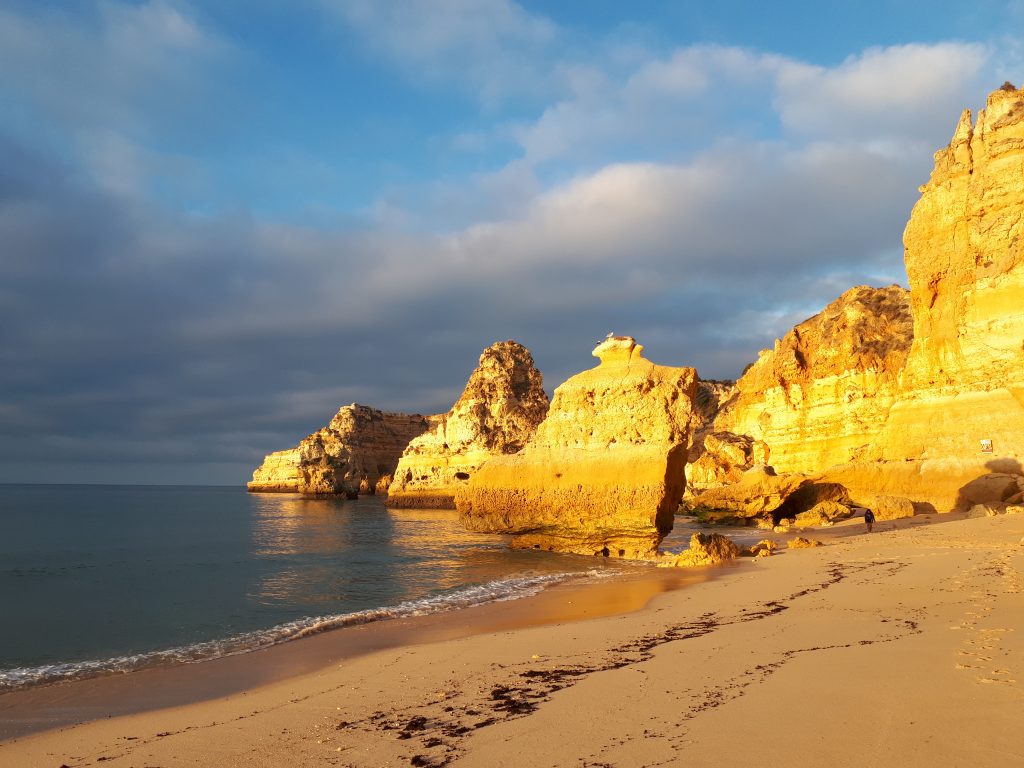
Exposed cliffs and source of pigments along the coast of Algarve in Portugal, 2017.
Rocks such as sandstone, shale, muscovite, etc. can also be processed, but the processing is a lot more tedious. Harder stones may be worth processing, especially if they have unique colors. Clays can make good pigments, but not always; you can dig them out, let them dry, remove any large or hard rocks or organic matter and grind them after levigation. Each geology and ecosystem has something different to offer you, and it requires a lot of experimentation.
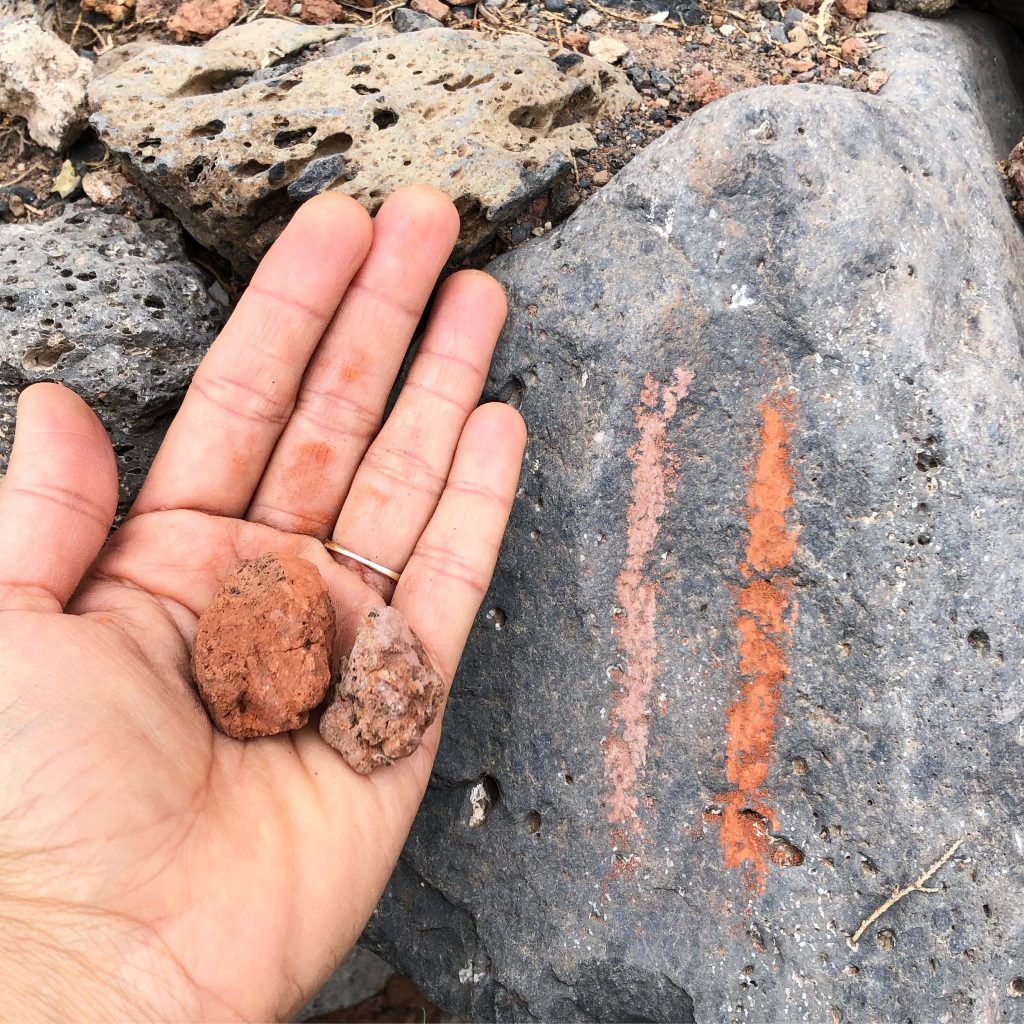
Oxidized volcanic stones, Boca Cangrejo, Tenerife 2020.
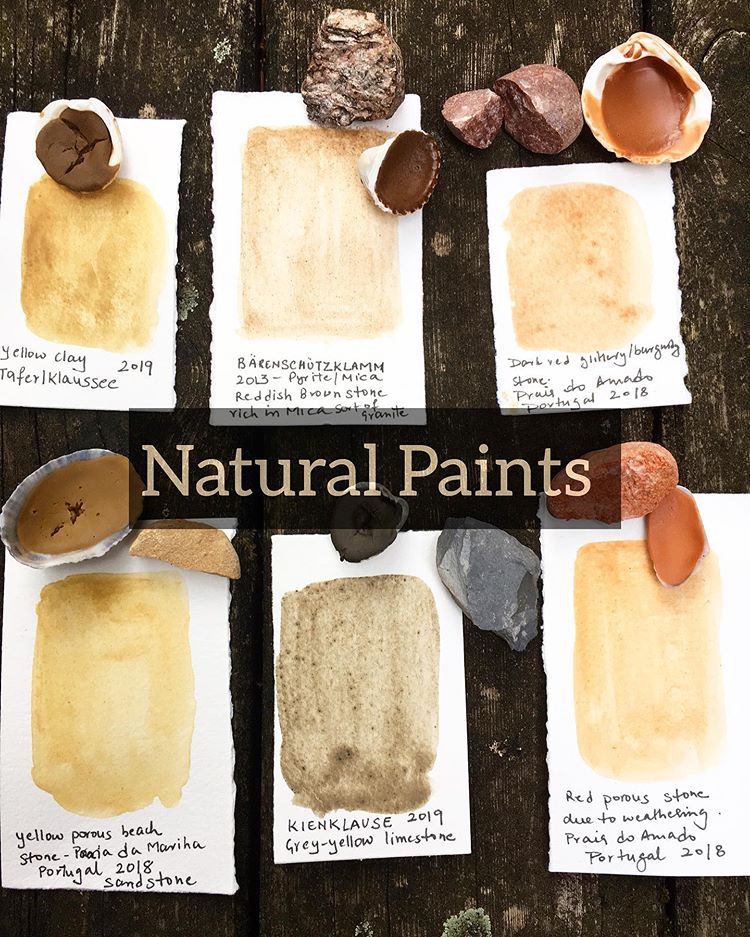
Paints made from various rocks collected in Portugal and Austria
Materials like soot and charcoal are excellent sources of pigments. Soot typically produces a warm black, while charcoal yields a cool black. Charcoal black, obtained through the carbonization or charring of wood, is highly stable, like all carbon blacks, and exhibits excellent lightfastness. It’s also compatible with other pigments. For instance, I collected some wood charcoal from a bonfire during a trail run in Upper Austria and transformed it into beautiful granular black paint. However, it’s important to remember that incomplete combustion of wood can result in the formation of toxic hydrocarbons. For more information on this topic, refer to [source link].
Among the best candidates for paint are ochres. Ochre is a term specifically used for pigments derived from iron oxides and iron-based minerals, clays, and soils. Essentially, ochres are common minerals found worldwide that contain varying amounts of iron and oxygen.
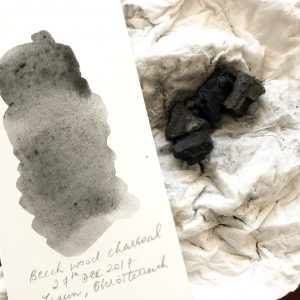
Beechwood charcoal collected during a trail run
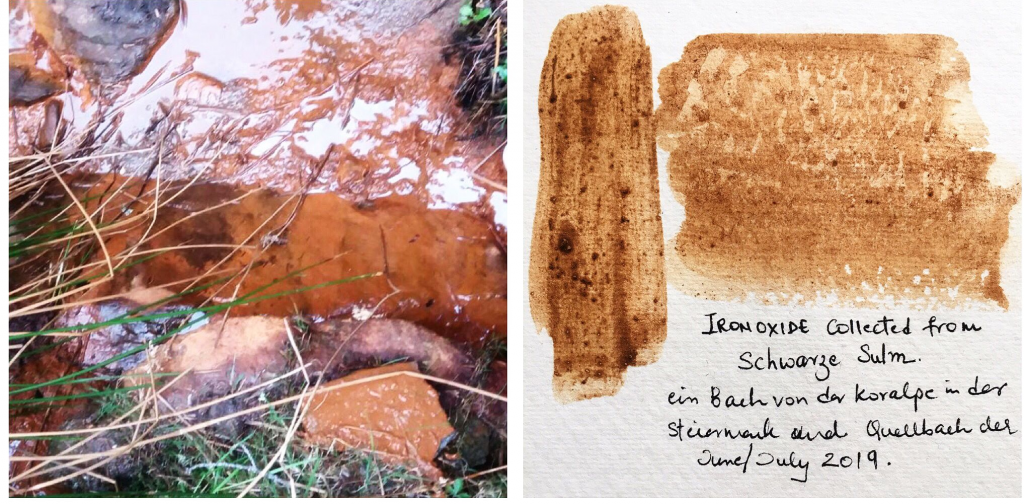
Iron oxide rich pigment oozing from a stream called Schwarze Sulm, Deutschlandsberg, Austria.
A short tutorial: Foraging for natural pigments.
How to make natural pigments
To prepare your pigments, you will need to ground the pigment candidates finely while not breathing in any dust. Before proceeding you must adhere to safety regulations. Connect with the energies of the earth during this process and embrace the time it takes to do this. I use the following approach:
1. Breaking rocks into smaller pieces
First, break the rocks into pieces that can be finely ground using a mortar and pestle. I use a hammer and a thick plastic sheet on which I break the rocks. Break the rocks as fine as you can using this method. This process must be carried outside and by wearing a respirator/NIOSH mask.
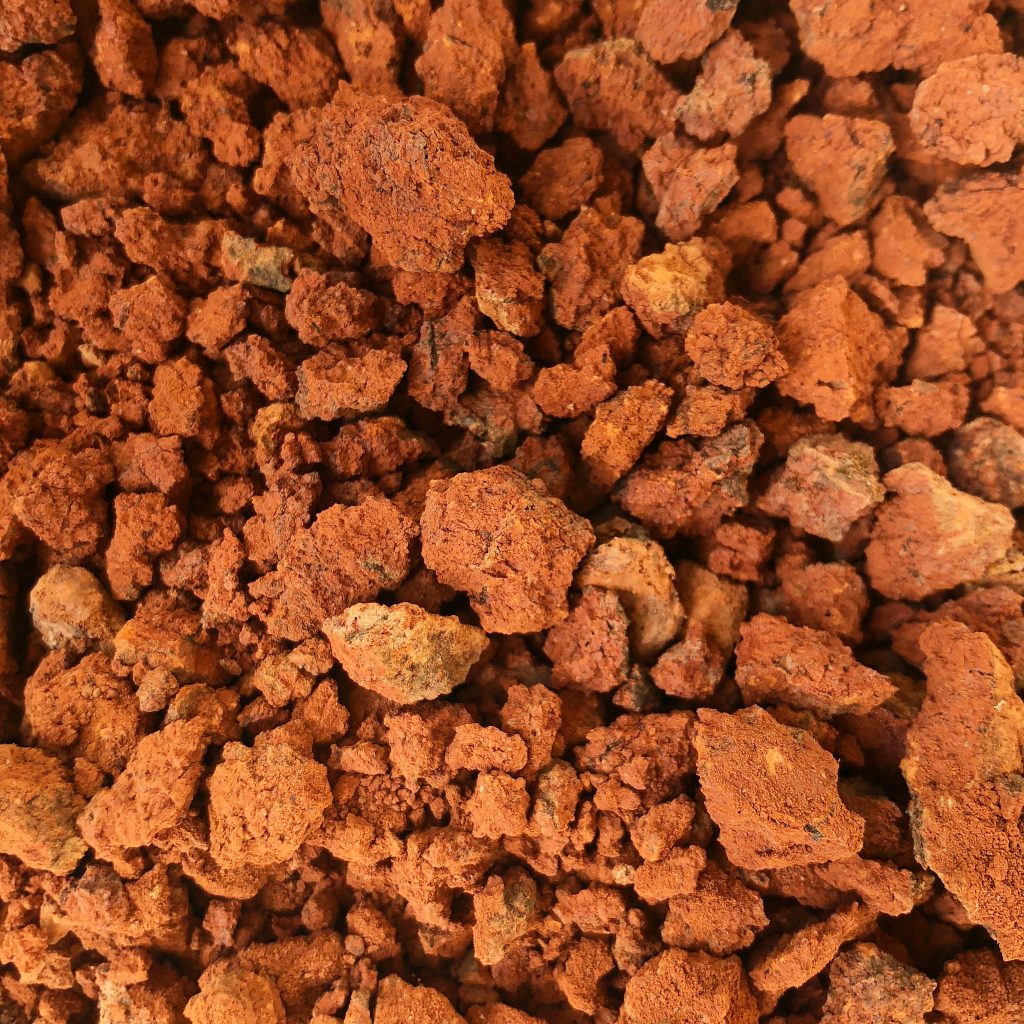
2. Grinding
Grind the pieces using a pestle and mortar until you have achieved a very fine powder. This process may be a bit difficult if you are not used to it. Therefore, before commencing make this process easy by breaking the pieces into smaller sizes with a hammer.
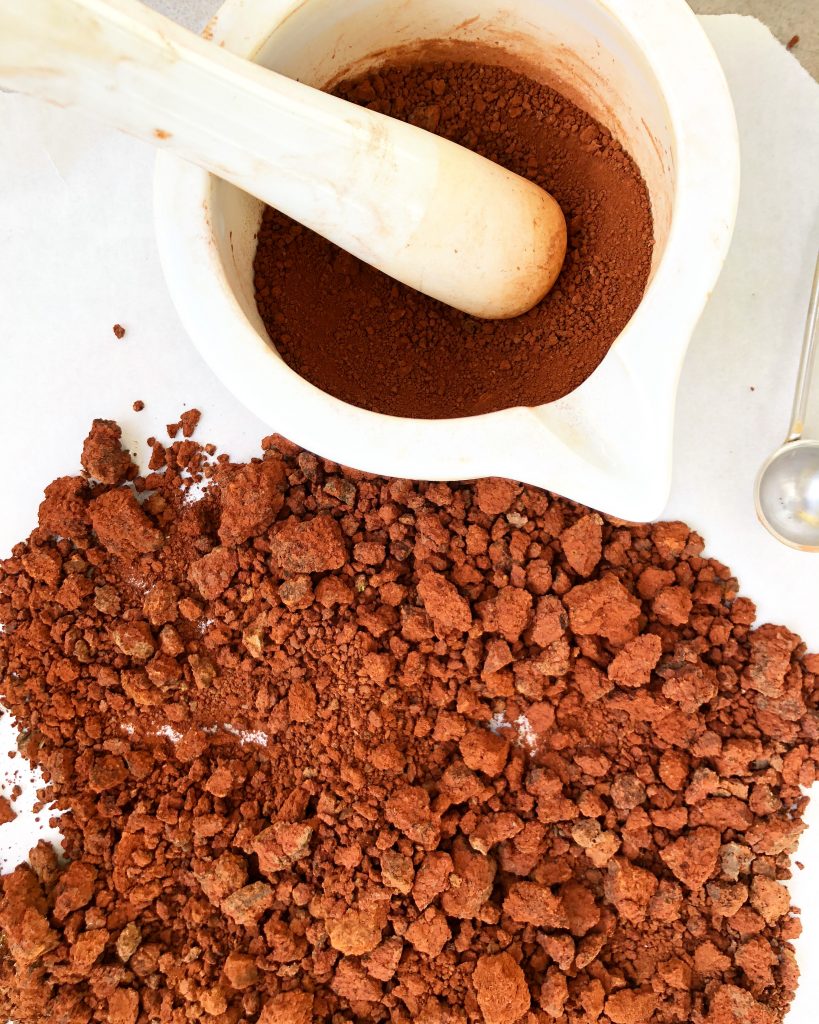
3. Sifting
Sifting is the most critical part of the pigment-making process. The goal is to attain the finest particles possible. You can sift multiple times to get a fine grind by using a sieve with very fine mesh. I use old pantyhose to get finer particles.
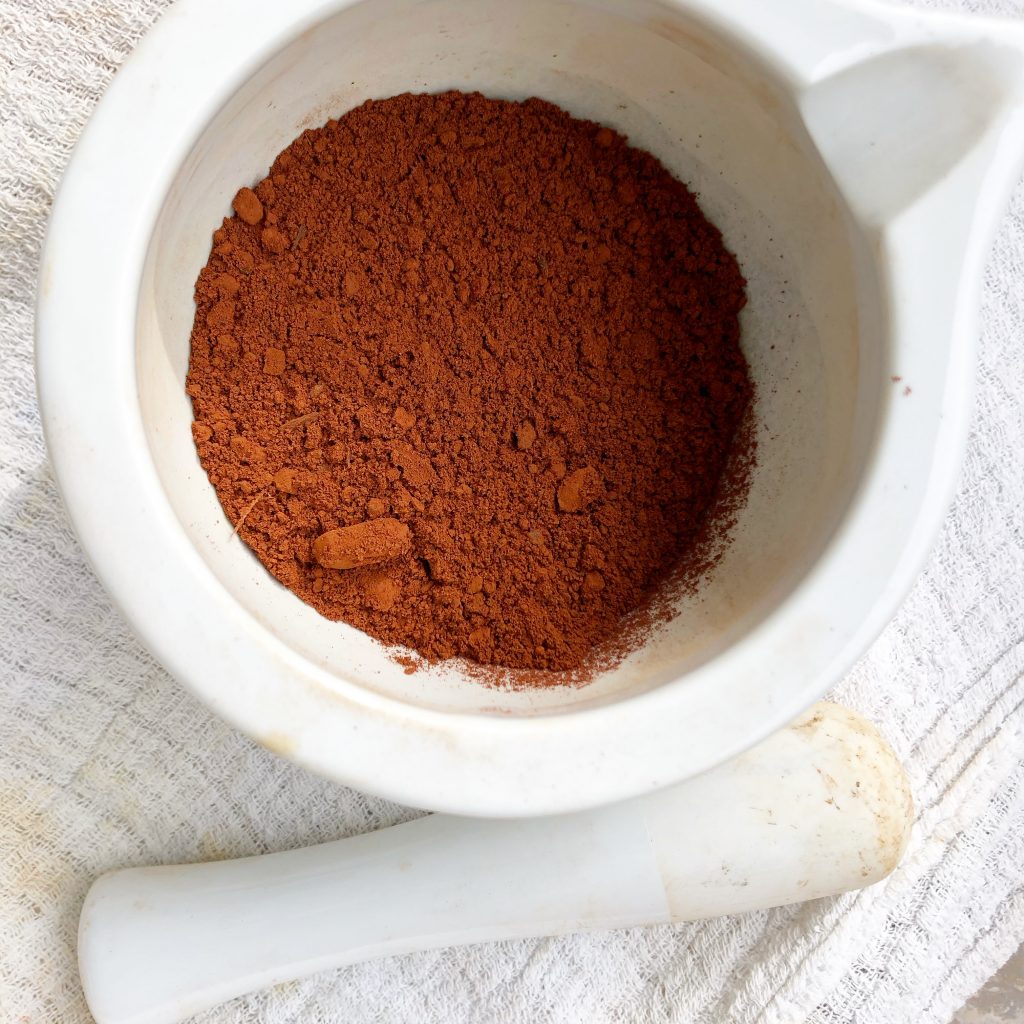
The process of grinding and sifting is really an art form in itself, some are easy to do, and some are quite difficult–depending on the material. It requires patience and is a very meditative process.
An alternative method of refining pigments is through the process of levigation. Read here for more information.
4. Make paints
Finally, paints are created by mixing pigments with different additives. Depending on the additives pigments can be transformed into oil paints, pastels, acrylic paints, watercolor paints, and/or tempera.
Handmade watercolor paints are made using a binder that is made from gum arabic, honey, glycerine (optional) distilled water, and clove oil (natural preservative). Read here about the safe working practice during the paint-making process. It is all about experimenting and figuring out what works best for you.
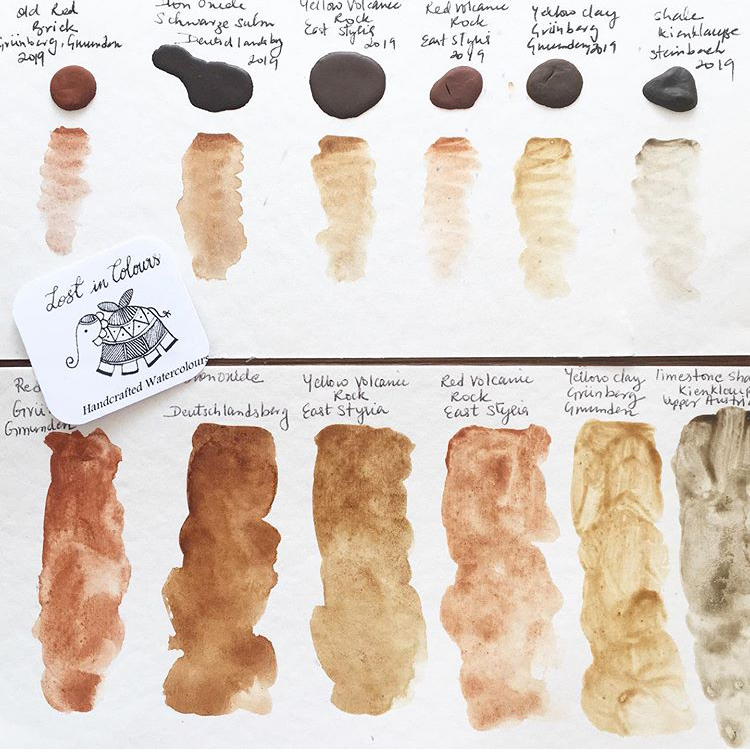
Watercolor paints made from foraged pigments.
5. Make sustainable art
Once your paints are ready you can start creating art that expresses how you feel, something that you can connect with, art that makes you happy and is sustainable!
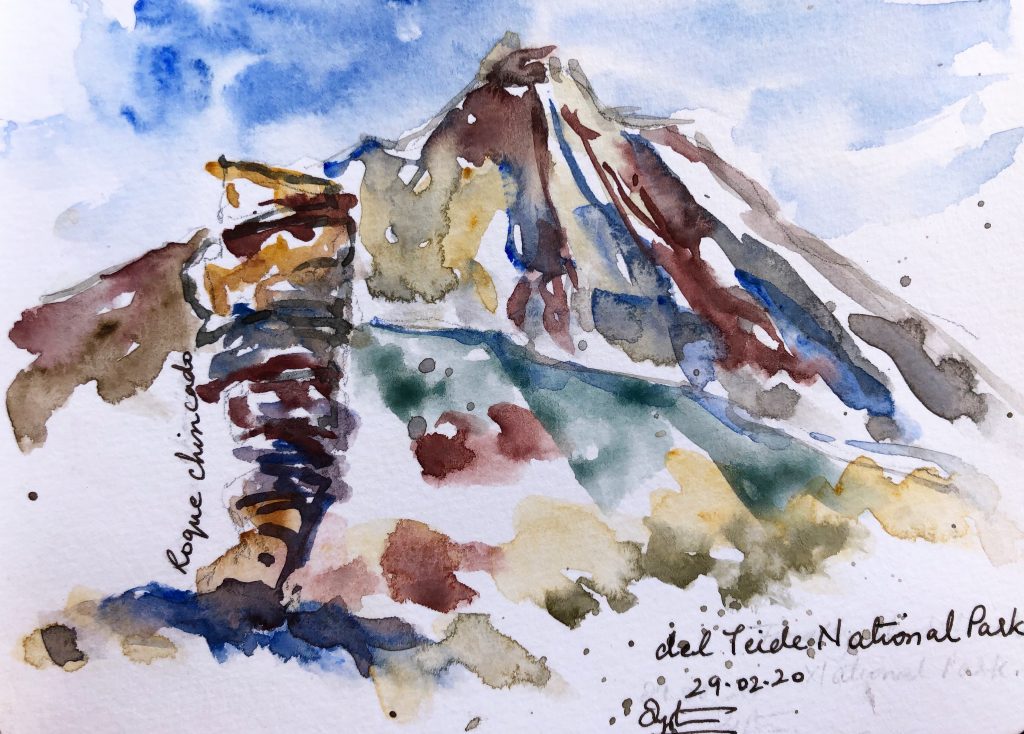
On location sketch from El Teide National Park, Tenerife 2020.
I am every bit enthralled by the process of making my own watercolor paints from the found treasures of the beautiful Earth. I hope this post has inspired you to pursue the same creative voyage!
“One must see nature as no-one has seen it before”- Cezzane
If you want to learn more, check out my new online course, a comprehensive guide to foraging and making natural pigments.
In this course, you will learn how to safely and ethically forage for natural pigments, how to identify, process, and transform an assortment of colored rocks and soils into beautiful and unique artist-grade pigments.
Disclaimer: Not every natural material is harmless. This includes mineral pigments and earth colors, which may contain hazardous components. When working with fine mineral dust, it is recommended to use a respirator or dust mask. It is advised that one must consult with the local authorities about the geological features of an area. The author may change the contents of this document at any time, either in whole or in part.
Reference links:
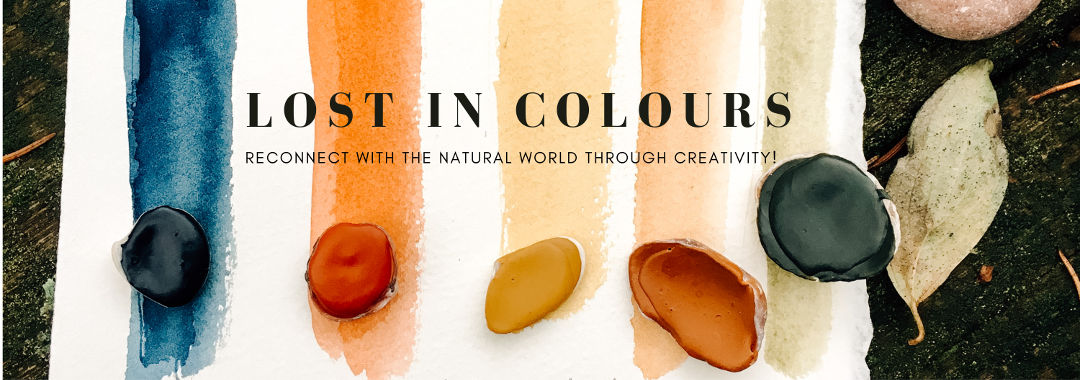
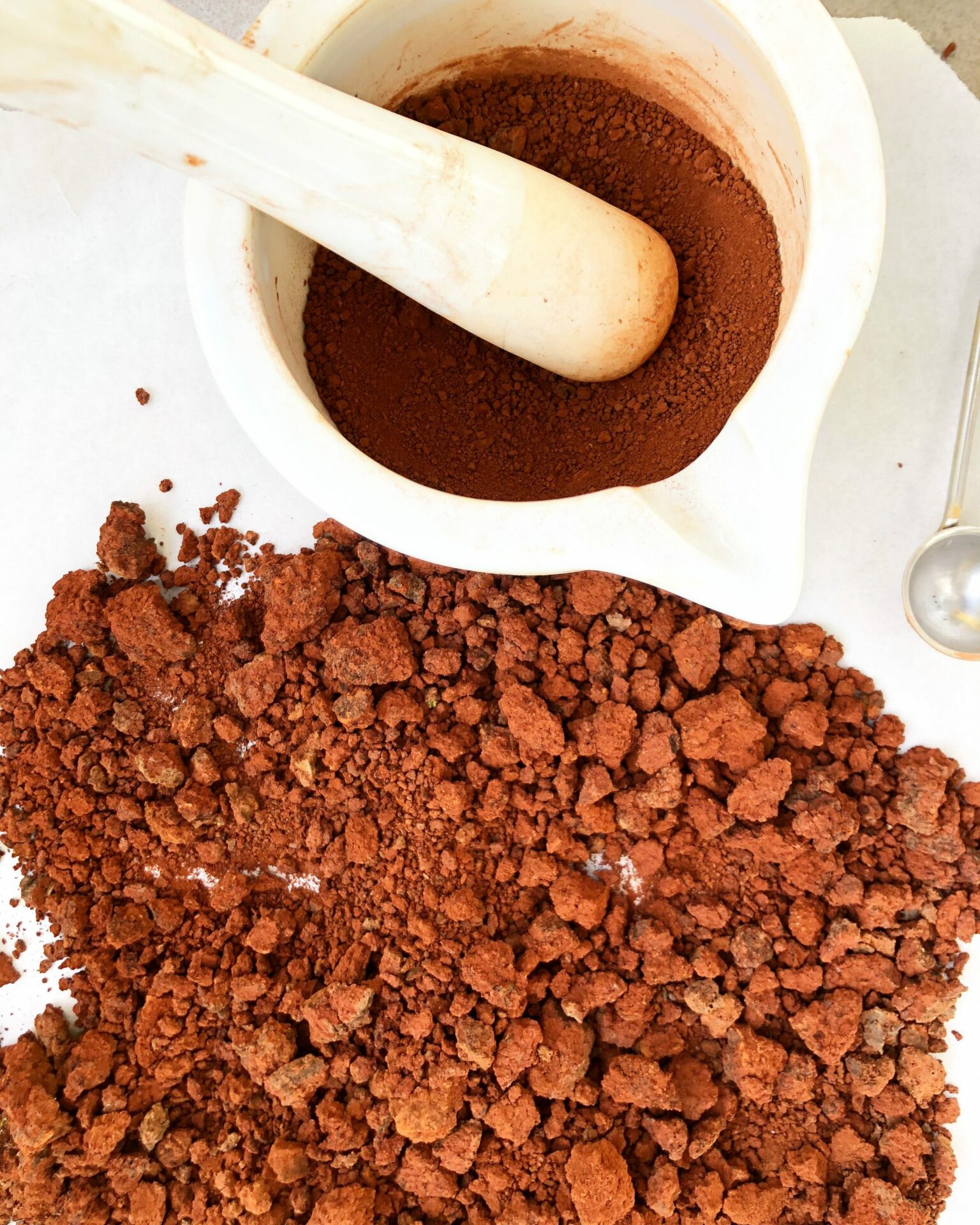

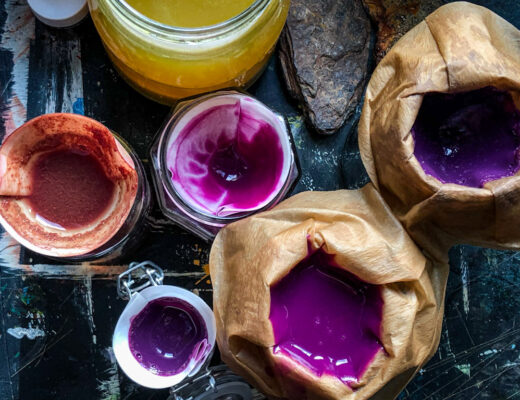
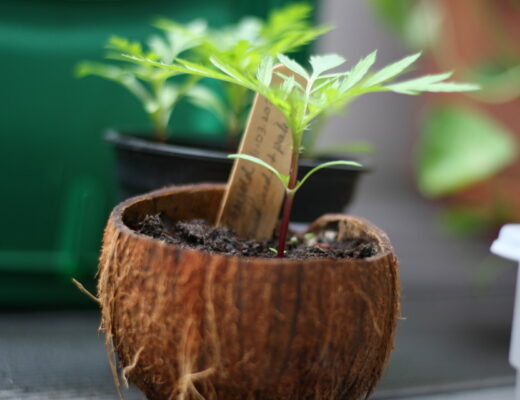
2 Comments
[…] options offer distinct advantages and appeal to artists, manufacturers, and consumers alike. While natural pigments evoke a sense of tradition and craftsmanship, synthetic alternatives provide reliability and […]
[…] my blog. In this post, I’ll show you how to create beautiful loose watercolor florals using natural pigments, with easy techniques that both beginners and experienced artists can […]